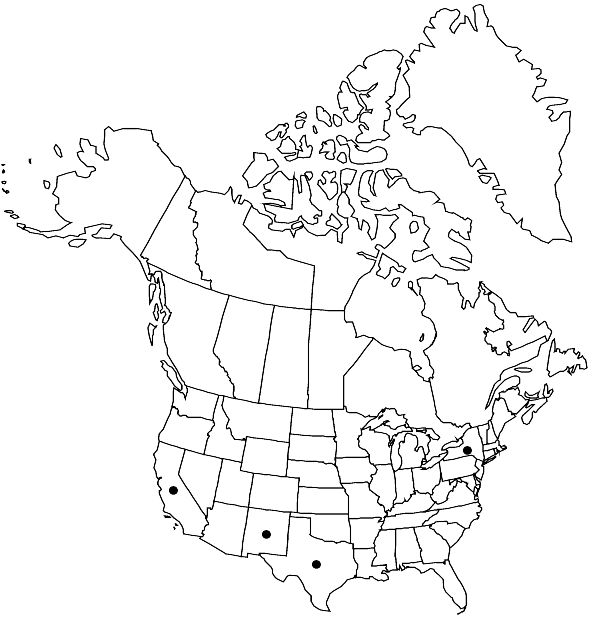Didymodon umbrosus
Phytologia 41: 22. 1978,.
Plants usually green to very bright green distally, contrasting with light tan proximally. Stems to 1(–1.5) cm, central strand present. Stem leaves spreading-incurved and twisted to incurved-appressed when dry, spreading to spreading-recurved and not keeled when moist, monomorphic, long-lanceolate, broadly concave adaxially across leaf, usually 1–2.5(–4) mm, base sharply differentiated in shape, ovate, margins usually plane, entire, apex narrowly acute, not fragile; costa percurrent or ending a few cells below the apex, broader at mid leaf, occasionally weakly spurred, with a low adaxial pad of cells, adaxial costal cells rectangular, 4–6 cells wide at mid leaf, guide cells in 1–2 layers; basal laminal cells strongly differentiated medially, rectangular, walls very thin or hyaline, often perforated by transverse slits; distal laminal cells in rather distinct rows, 7–12 wide, 1:1 or occasionally longitudinally elongate, papillae usually absent, lumens oval to rounded-quadrate or rounded-rectangular, walls convex on both sides of lamina, 2-stratose in one or more rows along margins. Specialized asexual reproduction by multicellular tubers on proximal rhizoids. Seta 0.7–1 cm. Capsule 1–1.9 mm; peristome teeth 32, linear, weakly twisted, to 600 µm. Spores 11–15 µm. Distal laminal KOH reaction variously negative or yellow- or orange- or red-brown.
Phenology: Capsules maturity not determined.
Habitat: Soil, lava, dolomite, cliff face, rock
Elevation: moderate to high elevations (200-1900 m)
Distribution

Calif., N.Mex., N.Y., Tex., Mexico, South America, Europe.
Discussion
Didymodon umbrosus is one of a number of mundivagant taxa whose distribution is associated with human activities (P. M. Eckel 1986). The proximal marginal cells are elongate and in distinctive rows. The transversely slit basal cells are distinctive in many specimens though also found in taxa of the Dicranaceae (R. H. Zander 1981b), some of which may belong in Pottiaceae (O. Werner et al. 2004).
Selected References
None.